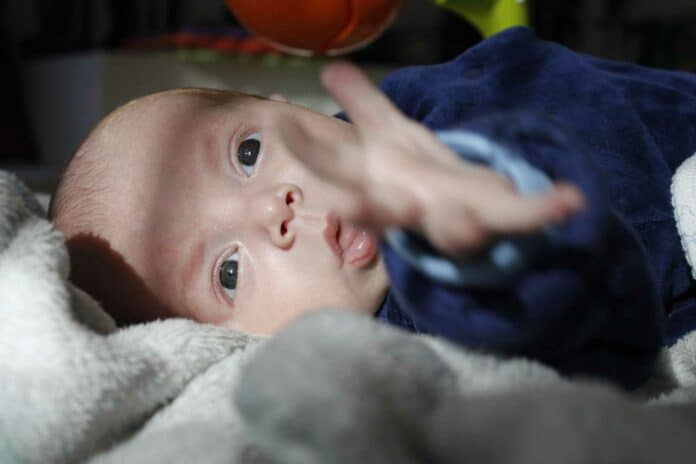Hypoxic-ischemic encephalopathy (HIE) is a leading cause of death and disability among neonates born at full term. Worldwide, approximately 1 million neonates die or survive with a significant disability every year from HIE.
This condition occurs when a baby’s brain does not get enough oxygen before or shortly after birth.
Previous studies in high-income countries (HICs) indicated that whole-body cooling benefits babies with hypoxic-ischemic encephalopathy (HIE). However, the most extensive investigation in low- and middle-income countries (LMICs) revealed that whole-body cooling worsened outcomes for HIE babies and might have increased mortality risk.
The new study explains the difference in treatment response, potentially leading to a simple test to identify babies who would benefit from cooling treatment.
Imperial College London researchers have demonstrated that a blood test can identify newborns’ root cause of brain injury. The study focused on infants with hypoxia-induced brain injury resulting from oxygen deficiency. The researchers discovered that blood-detectable gene expression patterns can indicate the cause of the injury and help doctors determine if the newborn will likely benefit from cooling treatment, a common approach for treating brain injury in infants.
The study could lead to a simple test to quickly diagnose brain injury in newborns and help with treatment decisions.
The study, conducted by Imperial College London and South Asian partners, involved 35 babies with hypoxic-ischemic encephalopathy (HIE) in Italy (a high-income country) and 99 babies from low- and middle-income countries in South Asia. Blood samples were taken at birth, and the babies were assessed at 18 months. Approximately half of the South Asian cohort faced severe outcomes, compared to a quarter in the Italian cohort.
Correlations between gene expression and outcomes revealed 1793 significant genes in the high-income cohort and 99 in the South Asian cohort, with only 11 common genes showing opposite expressions between the cohorts.
Study co-author Professor Swati Manerkar, from Lokmanya Tilak Municipal Medical College in Mumbai, India, comments: “We were expecting to see some differences in gene expression between babies in the cohorts – but not such a dramatic divergence. It clearly shows that we are seeing are very different causes of brain injury between the two groups, with different characteristics which also helps to explain why some babies respond to cooling and others are harmed by it.”
The researchers emphasize that the differences between cohorts are not linked to ethnicity but rather to socioeconomic factors. Chronic brain injury types commonly observed in low- and middle-income countries (LMICs) may also be present in deprived areas of high-income countries (HICs).
Conversely, more affluent populations in LMICs might experience acute brain injury types mostly seen in HICs in the current study. Identifying the specific type of brain injury is crucial for clinicians worldwide, and ongoing research aims to achieve this distinction promptly.
Journal Reference:
- Paolo Montaldo, Constance Burgod et al. Whole-Blood Gene Expression Profile After Hypoxic-Ischemic Encephalopathy. JAMA Network Open. DOI: 10.1001/jamanetworkopen.2023.54433
